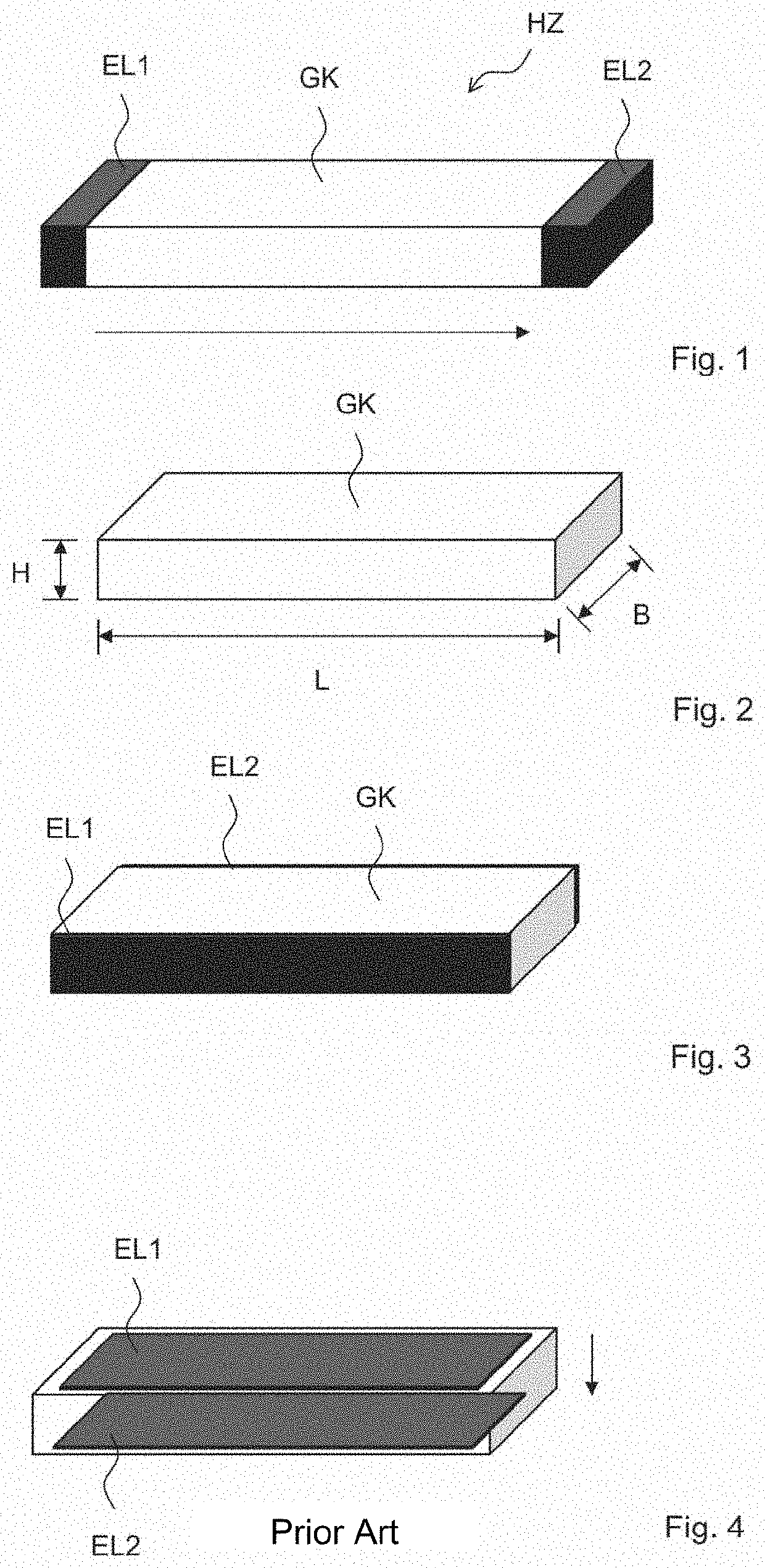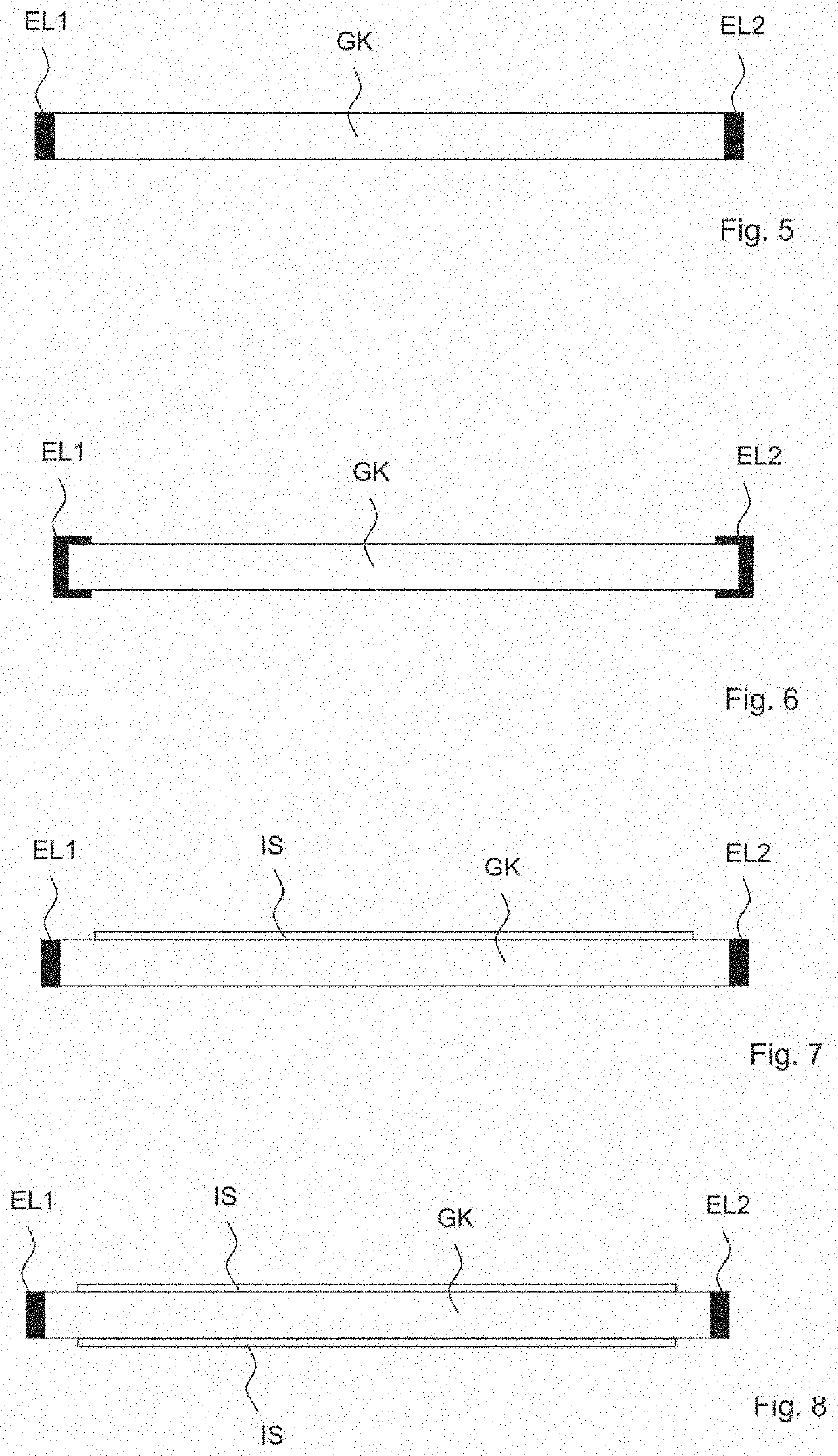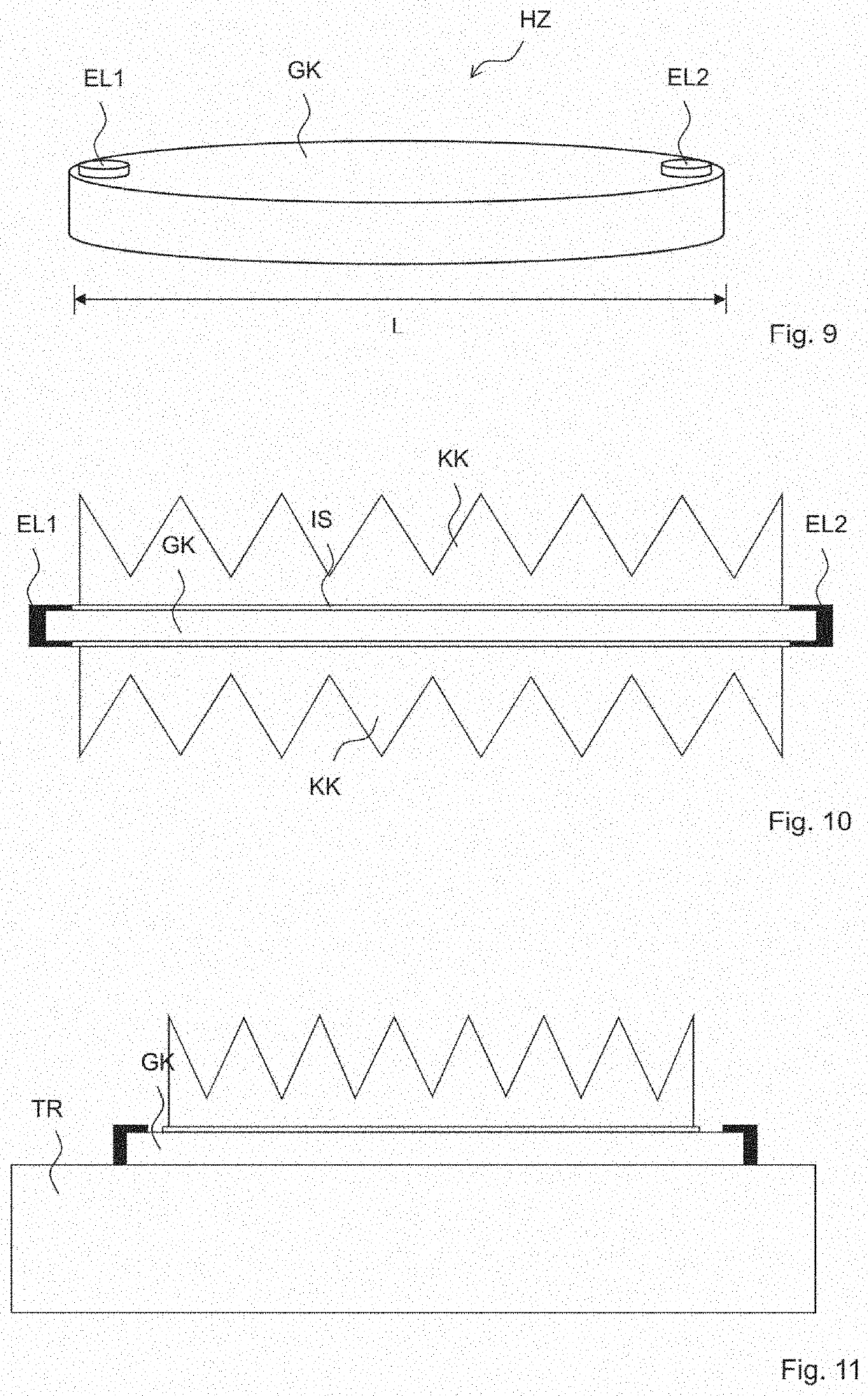PTC Heater with Reduced Switch-On Current
a switch-on current and heater technology, applied in the direction of resistor details, ohmic-resistance heating, positive temperature coefficient thermistors, etc., can solve the problem of low thermal resistance of the heater, achieve the effect of reducing the dependence of the quality of the heater on the variation of parameters during production, reducing the switch-on current, and increasing the breakdown voltag
- Summary
- Abstract
- Description
- Claims
- Application Information
AI Technical Summary
Benefits of technology
Problems solved by technology
Method used
Image
Examples
Embodiment Construction
[0043]FIG. 1 shows a fundamental design, in which the heater HZ has a main body GK, which is arranged between a first electrode EL1 and a second electrode EL2. The arrow indicates a possible direction of the electrical current in this case. The main body GK has the shape of a cuboid by way of example in FIG. 1. The electrodes are arranged in this case on ends of the main body which do not have the shortest spacing. The path of the electrical current is therefore relatively long. The electrical field strength is thus reduced in the main body and the number of the grain boundaries which the electrical current has to overcome is increased.
[0044]FIG. 2 shows the meaning of the terms length, width, and height with respect to a main body. In this case, the length is essentially the greatest-possible spacing of opposing ends, sections, or surfaces of the main body GK. The height is a measure of the shortest-possible spacing of opposing surfaces, sides, ends, or sections of the main body.
[0...
PUM
 Login to View More
Login to View More Abstract
Description
Claims
Application Information
 Login to View More
Login to View More - R&D
- Intellectual Property
- Life Sciences
- Materials
- Tech Scout
- Unparalleled Data Quality
- Higher Quality Content
- 60% Fewer Hallucinations
Browse by: Latest US Patents, China's latest patents, Technical Efficacy Thesaurus, Application Domain, Technology Topic, Popular Technical Reports.
© 2025 PatSnap. All rights reserved.Legal|Privacy policy|Modern Slavery Act Transparency Statement|Sitemap|About US| Contact US: help@patsnap.com



